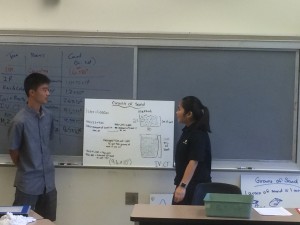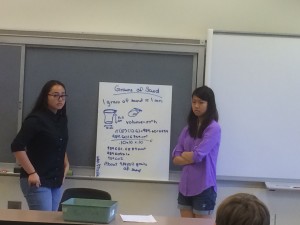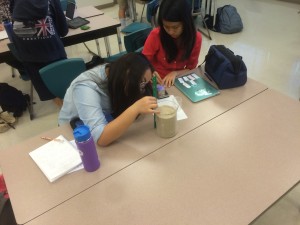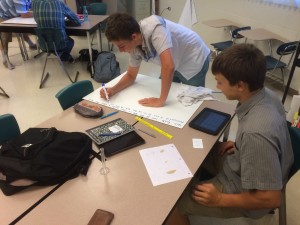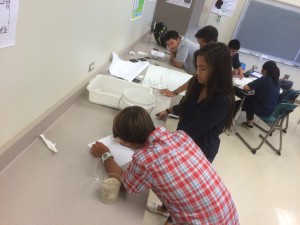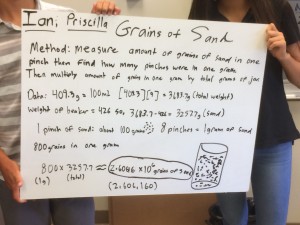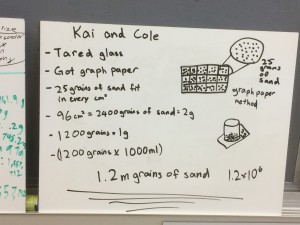A counting we will go!
The school year has started off, and we are already a week into class. I spent some time trying to think of a kickoff activity that would both give students a chance to collaborate, problem solve, do some mathematical thinking, and do it in the context of an interesting problem. I ended up settling on the idea that there are more stars in the universe then there are grains of sand on all the beaches of Earth. The students started off by looking at this short video from Hubble of a slice of the Andromeda galaxy:
Then we launched into the activity – they were put into teams of three, given a 1 L jar of sand, and asked to come up with a method, measurements, and calculation to give their best estimate of how many grains of sand were in the jar. Some of the pictures from that activity here:
Surprisingly (or maybe not much so) even though there were a wide range of methodolgies put into place, most student groups came up with a fairly consistent number in the range of one to one and a half million grains of sand. Of course, if we extrapolate that to how many stars are in our galaxy, it would take something on the order of 200,000 L of sand to approximate the number of stars in our galaxy. This is about the size of a small swimming pool. The final kicker is that there are as many galaxies as there are stars in our galaxy. So, you would need a swimming pool full of sand for each grain of sand in the swimming pool – certainly seems to be more sand than you could put on all the beaches of Earth.
All in all, the activity went well, and students were both challenged to think and explain about their mathematical calculations, as well as a deeper sense of appreciation of everything from the size of the galaxy, to the importance of scientific notation and exponentials.


